Every cloud has a silver lining, and every NFL team does some things well. Even the worst team has certain plays and tendencies in which the players are productive.
We've gone through Football Outsiders' extensive statistical databases to point out specific strengths of each team in 2016: one for offense, one for defense. Some of these splits are significant for illuminating the strengths and weaknesses of each team's personnel. Other splits tend to oscillate wildly from year to year, and a great performance in 2016 may not indicate that a team will be equally strong in the same ways in 2017. Either way, the numbers provide an interesting window into what each team did right last season.
Football Outsiders' advanced metrics are explained here. The most important is Defense-adjusted Value Over Average, which measures success on each play compared to the league average, adjusted for situation and opponent. Because DVOA is measured on a per-play basis, it can easily be separated to measure specific splits; you'll see a lot of those ratings below.
Charting stats such as frequency of blitzes, pass pressure and play-action come from ESPN Stats & Information research. Other charting metrics, including player personnel and broken tackles, come from Sports Information Solutions. You'll be able to find many more of these stats in our Football Outsiders Almanac 2017, which will be released online on July 24.
AFC East | AFC North | AFC South | AFC West
NFC East | NFC North | NFC South | NFC West
AFC EAST
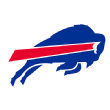
Buffalo Bills
Offense: Running from two-back sets
The Bills were much better when they had a fullback or tight end in the backfield: 5.7 yards per carry and 24.4 percent DVOA from multi-back sets, compared to 4.6 yards and 7.4 percent DVOA from single-back sets. Fifty-seven percent of the Bills' runs come out of multi-back sets last year, the highest rate in the league. Buffalo and New England were the only teams over 50 percent. Just five years ago, more than half the teams in the league were over 50 percent.
Defense: Play when trailing
One reason the Bills really weren't blown out until the last week of the season: The defense never let opponents run away with a game. Although the Bills had one of the league's worst defenses overall (27th in DVOA), they ranked third in defense when they were losing by more than a touchdown.
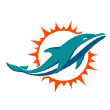
Miami Dolphins
Offense: Empty sets
The Dolphins were fabulous from empty-backfield sets: 8.9 yards per play and a league-leading 95.0 percent DVOA.
Defense: First-down pass defense
Overall, the Dolphins had an average pass defense, 16th-ranked DVOA in the NFL. But on first down, the Dolphins ranked third in pass-defense DVOA; only Denver and Pittsburgh were better.

New England Patriots
Offense: Field position
Between good special teams and a lack of turnovers, the Patriots constantly had strong field position. They started drives with an average of just 69.3 yards to go (second in NFL) and opponents started drives with an average of 75.1 yards to go (first in NFL).
Defense: Preventing YAC
The Patriots led the NFL by allowing an average of just 4.0 yards after the catch. That may seem like it's been a staple of the Patriots' defense for a long time, but actually, it hasn't. New England ranked fifth in 2015 but average or worse from 2012-2014.
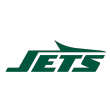
New York Jets
Offense: Running back screens
It took a lot of time and effort, but we were finally able to find something the Jets' offense did well last year. They threw more screen passes to running backs than any other team in the NFL, averaging 7.0 yards per play with 31.6 percent DVOA.
Defense: Short passes
The Jets ranked fifth in defensive DVOA against passes thrown behind the line of scrimmage.
AFC NORTH

Baltimore Ravens
Offense: Broken tackles
Baltimore ranked second with 145 broken tackles after ranking near the bottom of the league with just 81 in 2015. Most of the change came from running backs, switching out Buck Allen (23 in 2015) and Justin Forsett (12) for Kenneth Dixon (34 in 2016) and Terrance West (49 on 227 touches in 2016 after 8 on 66 touches in 2015)
Defense: Performance at home
The Ravens had the No. 1 defensive DVOA in the league at home but ranked 23rd in defensive DVOA on the road. This is more of a weird fluke stat than something that will likely carry over into 2017.

Cincinnati Bengals
Offense: Avoiding Penalties
The Bengals were dead last in 2016 with just 44 offensive penalties and 273 offensive penalty yards.
Defense: Deep right
Cincinnati had the league's best defense on passes to the deep right portion of the field. It allowed a catch rate of just 24 percent (compared to 38 percent for the league average) and had four interceptions.

Cleveland Browns
Offense: Draw plays
Cleveland used the draw play more frequently than any offense except Philadelphia, and ranked second in both yards per carry (7.9) and DVOA (57.4 percent). Perhaps nobody expects the draw when the offense is down by three touchdowns.
Defense: Depth in the secondary (sort of)
Sorry, last year's Cleveland defense was horrible. It's nearly impossible to find any defensive split where the Browns ranked in the top 10. They just barely qualified in pass defense against No. 3 receivers, ranking 10th.

Pittsburgh Steelers
Offense: Scoring at the goal line
Pittsburgh led the league in offensive DVOA in goal-to-go situations, scoring touchdowns on half these plays and never turning the ball over.
Defense: Blitzing defensive backs
The Steelers cut their use of DB blitzes in half, sending a defensive back on only 9.1 percent of pass plays (18th) after ranking second with 19 percent in 2015. But the DB blitzes they called did work well, as they allowed 5.7 yards per pass compared to 6.4 average yards on other passes.
AFC SOUTH

Houston Texans
Offense: Running behind Duane Brown
The Houston running game was at its best running behind the three-time Pro Bowl tackle, ranking fifth in adjusted line yards on runs marked as left tackle.
Defense: Blitzes
The Texans' defense was fantastic when it sent extra pressure. It allowed 7.0 yards per pass with the standard four pass-rushers, but that dropped to 5.9 yards with five pass-rushers and just 3.3 yards with six or more.
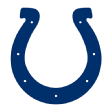
Indianapolis Colts
Offense: Preventing stuffs
Only 12.9 percent of runs by Indianapolis running backs were stuffed for a loss or no gain, the lowest rate in the league. (The NFL average was 19.4 percent.)
Defense: Stopping runners on third down
The Colts ranked third in run-defense DVOA on third or fourth down, and allowed only 42 percent of these runs to convert (compared to a league average of 52 percent). This would be more impressive, of course, if the Colts didn't have 2016's worst run defense on first and second downs.

Jacksonville Jaguars
Offense: Red zone efficiency
Though the Jaguars' offense struggled overall, ranking 26th in DVOA, they were very good in the red zone. Jacksonville ranked ninth in red zone DVOA and 11th with touchdowns ending 60 percent of its red zone drives.
Defense: Tackling
Jacksonville's young defense has improved its tackling significantly. In 2015, the Jaguars allowed 122 broken tackles and ranked 26th in broken-tackle rate. In 2016, they tied the Packers with a league-low 79 broken tackles, and ranked second in broken-tackle rate behind Denver.
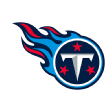
Tennessee Titans
Offense: Running from spread sets
Despite their overall run-heavy offense, the Titans ran just 21 percent of the time when they had three or more wide receivers on the field, the lowest figure in the NFL. However, the Titans ranked second overall in both DVOA (14.9 percent) and yards per carry (5.53) on runs from three- or four-WR sets.
Defense: Short-yardage run defense
The Titans ranked No. 1 overall in preventing conversions on runs in short-yardage situations. They allowed a conversion rate of just 45 percent on third down, fourth down or the goal line with 1-2 yards to go.
AFC WEST
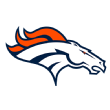
Denver Broncos
Offense: Passing against blitzes
Trevor Siemian did a strong job of diagnosing the blitz last season. His yards per attempt jumped from 5.5 when facing a standard pass-rush to 7.9 yards against five pass-rushers and 8.9 yards against six or more. Paxton Lynch also did well against the blitz in his limited playing time, going from 4.5 average yards with a regular pass rush to 7.0 yards against a blitz.
Defense: Tackling
The Broncos not only cover well, they also tackle, compiling a league-low broken-tackle rate of 7.4 percent. (They were tied for fourth with 83 broken tackles allowed, but faced more plays than the defenses with fewer broken tackles.)
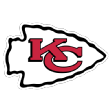
Kansas City Chiefs
Offense: Wide receiver screens
Kansas City ran more wide receiver and tight end screens than any other offense. We had them charted with 68 such plays, while no other team had more than 50. The Chiefs averaged 7.8 yards per pass with 34.6 percent DVOA on these plays.
Defense: Red zone
The Chiefs were very strong inside the 20. They ranked second in red zone defensive DVOA (35 percent more efficient than average), fourth in points per red zone drive (4.34) and fifth in preventing touchdowns on red zone drives (49.1 percent).
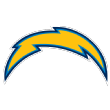
Los Angeles Chargers
Offense: Play-action passes
Last season was the first time since 2012 that the Chargers did not rank dead last in frequency of play-action. Perhaps they finally figured out that Philip Rivers is really good on the play-action deep pass. The Chargers led the NFL with 83.9 percent DVOA on play-action passes and ranked third with an average gain of 9.6 yards, matching a trend we've seen for the past few years.
Defense: Pinning opponents back
The Chargers had the best defensive DVOA in the NFL last year when they had the other offense pinned behind its own 20-yard line.
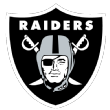
Oakland Raiders
Offense: Passing against blitzes
Derek Carr was better against the blitz than he was against a regular pass rush. Carr averaged 6.8 yards per play against four pass-rushers or fewer, but 7.9 yards per play against a blitz. That included 8.2 yards per play against DB blitzes with 91.2 percent DVOA, highest in the NFL. Carr was also better against the blitz in 2015, though he was worse as a rookie in 2014.
Defense: Stopping spread-formation runs
Overall, the Raiders had an average run defense. But they were fourth in DVOA against runs from three- and four-WR sets, trailing only the Giants, Jaguars and Patriots.
NFC EAST

Dallas Cowboys
Offense: Short passes
Dallas led the league with 8.2 yards per pass, 58.1 percent DVOA, and 11.2 average yards after the catch on passes thrown at or behind the line of scrimmage. Only two other teams, Denver and Tampa Bay, averaged more than 6.5 yards on such passes. Even without Ezekiel Elliott's 83-yard touchdown against Pittsburgh from Week 10, the Cowboys still would have ranked third.
Defense: Second-and-short
Although the Cowboys ranked just 26th in overall defensive DVOA on second downs, they were No. 1 on second-and-short (1-2 yards to go).

New York Giants
Offense: Running back screens
The Giants threw the second-most running back screens (36) and averaged a phenomenal 7.9 yards and 43.6 percent DVOA on these plays.
Defense: Blitzing
The Giants allowed just 5.1 yards per pass when blitzing, second in the NFL behind Minnesota, compared to 6.8 yards per pass when utilizing three or four pass-rushers.

Philadelphia Eagles
Offense: Plays from "traditional" formations
Burying the legacy of Chip Kelly quickly, the Eagles were a better offense from formations with Carson Wentz under center (eighth in DVOA, 12th in yards per play) than formations with Wentz in shotgun (26th in DVOA, 30th in yards per play).
Defense: Covering tight ends
For the second straight year, Philadelphia was dead last in the frequency of opposing passes targeting tight ends (13.8 percent). That's probably because the Eagles were fantastic covering tight ends. They allowed a completion rate of just 59.2 percent, second in the NFL, and had a league-best DVOA of minus-53.0 percent.

Washington Redskins
Offense: Broken tackles
Washington's offense made a massive improvement in broken tackles last season with 149, compared to just 81 in 2015. Matt Jones had 19 broken tackles in each season, and Jordan Reed had only 12 last year compared to 19 the year before. The biggest difference? Rob Kelley had 43 broken tackles in 2016 compared to just 12 for Alfred Morris in 2015, while Chris Thompson went from eight broken tackles on 70 touches to 30 broken tackles on 117 touches.
Defense: Playing against 12 personnel
This may be a small sample size fluke, since we're talking about fewer than 150 plays, but Washington had the best defense in the league against 12 personnel (1 RB, 2 TE). Washington ranked No. 1 with minus-30.0 percent DVOA and allowed only 4.4 yards per carry.
NFC NORTH

Chicago Bears
Offense: Pass blocking
The Chicago offensive line doesn't get as much press as their counterparts in Dallas or Oakland, but it had a great season in 2016. The Bears ranked sixth in the pressure rate allowed and seventh in the adjusted sack rate allowed.
Defense: Three-and-outs
Chicago's defense was sixth in forcing three-and-outs (25.8 percent of drives) despite ranking just 22nd in defensive DVOA.
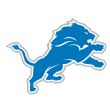
Detroit Lions
Offense: Broken tackles
The Lions' forced 128 broken tackles (tied for ninth), but because they ran so few plays, they ranked second in broken-tackle rate. A Lions ball carrier broke a tackle on 12.3 percent of plays, second only to Washington's 12.8 percent. Golden Tate, who is always among the league leaders for wide receivers, finished third in 2016 with 27 broken tackles. Theo Riddick had 33 in only 10 games, while Zach Zenner and Dwayne Washington each had 15.
Defense: Preventing YAC
The Lions' pass defense was generally terrible last year, but at least it didn't let opponents run all over them after catching the ball. Detroit finished eighth, allowing only 4.8 average yards after the catch. The Lions were sixth with just 3.8 average yards after the catch allowed if we only look at passes past the line of scrimmage.
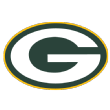
Green Bay Packers
Offense: Runs on second down
No running backs? No problem. The Packers were forced to move receiver Ty Montgomery to running back for the second half of the year, but they still finished No. 1 in DVOA when running on second down.
Defense: Tackling
Despite their other defensive problems in 2016, the Packers dramatically improved their tackling from past seasons. They tied Jacksonville with a league-low 79 broken tackles allowed and ranked third with broken tackles on just 7.6 percent of plays, after finishing 30th and 31st in broken-tackle rate the previous two years. Blake Martinez led the Packers with just eight broken tackles allowed; every other defense in the league had at least three players with eight or more broken tackles.

Minnesota Vikings
Offense: Play-action passing
It's a somewhat shocking fact, but there's no correlation whatsoever between how well an offense runs the ball and how effective that offense is on play-action passing. A good example from last year would be Minnesota. Despite having a horrific running game, the Vikings gained 9.2 yards per play with play-action compared to just 6.0 yards per play otherwise, the largest gap in the league.
Defense: Blitzing
The Vikings were fantastic when they brought a blitz. They allowed 6.3 yards per pass with three or four pass-rushers, but that dropped to 5.7 with five and 3.2 with six or more.
NFC SOUTH

Atlanta Falcons
Offense: Catching passes
One of the quiet secrets to Atlanta's offensive explosion last year: The Falcons had just 10 dropped passes, according to ESPN Stats & Information research. Only Tennessee (nine) had fewer. It was a major difference from 2015, when the Falcons ranked among the worst in the league with 30 drops.
Defense: Dime defense
Atlanta excelled when it had to put six defensive backs on the field. The Falcons allowed just 5.3 yards per play, and their minus-12.7 percent DVOA while playing dime defense ranked second overall among the 15 teams that used a dime defense on at least 10 percent of plays. (Denver was No. 1.)

Carolina Panthers
Offense: Six-linemen sets
The Panthers were one of 15 teams that used six or seven offensive linemen on at least 5 percent of plays in 2016. They ranked second among those 15 teams with 23.8 percent offensive DVOA, behind only the Patriots. Their average of 4.4 yards per carry on these plays seems less impressive on the surface, but that's because the Panthers tended to specifically use big formations in short-yardage situations.
Defense: Stopping shotgun runs
The Panthers had the league's best defense against runs from the shotgun or pistol according to both DVOA (minus-33.2 percent) and yards per carry (3.1).

New Orleans Saints
Offense: Running from shotgun formations
The Saints had a league-leading 23.9 percent DVOA on runs from the shotgun, although they only ran on 12 percent of their shotgun snaps (29th in NFL).
Defense: Forcing fumbles
The Saints didn't do a lot of things right on defense last year, but they did manage to end 7.2 percent of opponent drives with a fumble, the best figure in the league.
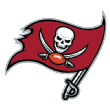
Tampa Bay Buccaneers
Offense: Second-half play
Tampa Bay's offense last year ranked 28th in DVOA for the first half of games, but improved to sixth in the second half of games, including fifth in "late and close" situations (second half or overtime, score within eight points).
Defense: Defending the most important passes
Tampa Bay's defense ranked 12th overall in DVOA last season, but the Bucs ranked third in DVOA against passes in the red zone and second in DVOA against passes on third down.
NFC WEST
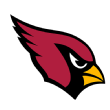
Arizona Cardinals
Offense: Wide receiver screens
The Cardinals averaged an excellent 7.1 yards per pass with 30.6 percent DVOA on wide receiver screens.
Defense: Covering running backs
Arizona was the best defense in the league against passes to running backs, with a league-leading minus-43.5 percent DVOA. After adjusting for strength of schedule, the team allowed opposing running backs an average of just 24 receiving yards a game.

Los Angeles Rams
Offense: Play-action passing
It took a lot of work, but we found something the Rams' offense did well last year: play-action passing. The Rams gained 8.3 yards per pass with play-action (12th in NFL) with 15.6 percent DVOA (21st). They were, of course, dead last in both stats on other passes.
Defense: Stuffing runners
The Rams stuffed 29 percent of running back carries for a loss or no gain, by far the best rate in the league. The Jets (27.2 percent) were the only other defense above 24 percent.
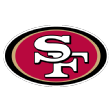
San Francisco 49ers
Offense: Running on first downs
Although the 49ers' offense was poor overall, the running backs did a good job of putting the quarterbacks in position to succeed on second and third down. The 49ers ranked third in DVOA when running the ball on first down, with their running backs averaging 4.82 yards per carry (sixth in the league).
Defense: First-quarter defense
Finding particularly good splits for San Francisco's defense last year is extremely difficult, but it did at least manage to start games strong, ranking 10th in DVOA in the first quarter.

Seattle Seahawks
Offense: Deep passing
Seattle ranked fifth in DVOA on passes that traveled 16 or more yards past the line of scrimmage. (The top four teams: Atlanta, New England, Oakland and Dallas.)
Defense: Preventing long runs
One of the secrets to Seattle's run defense is strong tackling in the secondary, even if runners get past the first and second levels. The Seahawks ranked third in fewest open-field yards per carry, defined as gains that come more than 10 yards past the line of scrimmage.
